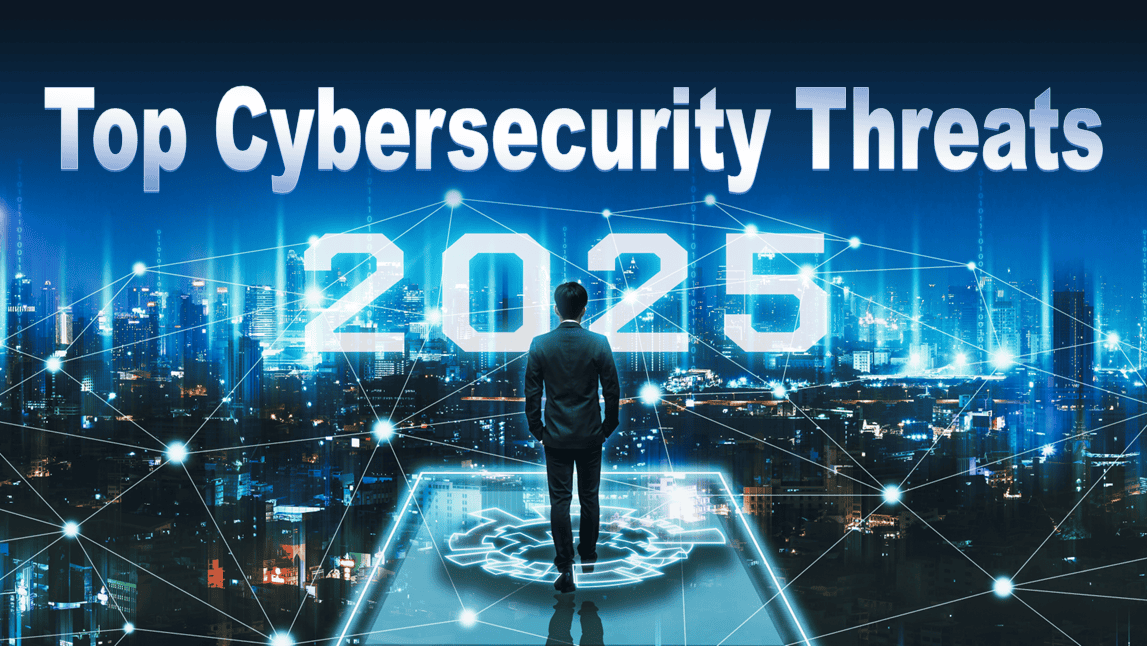The digital realm is evolving rapidly, and with it comes a surge of new cybersecurity threats that could shake the very foundation of our Techprimex.co.uk connected world in 2025. Whether you’re a business owner, tech enthusiast, or just an everyday internet user, understanding these threats is crucial. This article will delve deep into the emerging risks, weaving in real-world scenarios to make the risks tangible.
The Changing Landscape of Cybersecurity
In the past, cybersecurity felt like a distant concern—reserved for big corporations and governments. But in 2025, cyber threats are everyone’s problem. Hackers aren’t just after large enterprises anymore; they target individuals, small businesses, and even smart homes. The lines between personal and professional digital lives are blurred, creating vulnerabilities everywhere.
AI-Powered Cyber Attacks
Artificial Intelligence (AI) isn’t just a buzzword anymore; it’s a double-edged sword. While it’s revolutionizing industries, it’s also arming hackers with advanced tools.
How AI Is Changing the Game
Imagine a phishing email so convincing that even the most tech-savvy individual falls for it. That’s what AI can do. AI-driven phishing attacks can analyze user behavior, language patterns, and personal data to craft eerily personalized messages.
Key Threats:
- Deepfake Scams: Fake videos or audio clips that impersonate CEOs or public figures, convincing employees to transfer funds.
- AI-Enhanced Malware: Self-learning malware that adapts to security measures in real-time.
How to Protect Yourself:
- Regularly update security software.
- Educate employees about recognizing deepfake technology.
- Implement multi-layered security protocols.
Ransomware Evolution
Ransomware isn’t new, but in 2025, it’s more aggressive and sophisticated.
The Story of a Small Business Hit Hard
Picture this: A small e-commerce startup wakes up to find all its files encrypted, customer data locked, and a chilling message demanding Bitcoin. They thought they were too small to be targeted—big mistake.
Emerging Trends:
- Double Extortion Tactics: Hackers steal data before encrypting it, threatening to leak sensitive information.
- Ransomware-as-a-Service (RaaS): Even non-technical criminals can launch attacks by renting ransomware tools.
Defense Strategies:
- Regular Data Backups: Store them offline.
- Zero Trust Architecture: Trust no one—verify everything.
- Employee Training: Awareness is your first line of defense.
IoT Vulnerabilities
The Internet of Things (IoT) connects everything from your fridge to industrial machinery. But every connected device is a potential entry point for hackers.
Why IoT Is a Hacker’s Playground
Many IoT devices lack robust security measures. They’re easy targets because manufacturers often prioritize functionality over security.
Real-World Impact:
- Smart Home Invasions: Hackers taking control of home devices, from cameras to thermostats.
- Industrial Sabotage: Compromising factory equipment to cause disruptions.
How to Stay Secure:
- Change default passwords immediately.
- Keep device firmware updated.
- Use network segmentation to isolate IoT devices.
Supply Chain Attacks
In 2025, attackers don’t just target companies—they target their suppliers.
Understanding the Risk
Think of it like breaking into a bank by sneaking through an unlocked backdoor. Hackers compromise smaller vendors with weaker security to infiltrate larger companies.
Examples:
- Software Supply Chain Attacks: Injecting malicious code into legitimate software updates.
- Hardware Backdoors: Tampering with physical components during manufacturing.
Mitigation Strategies:
- Vet third-party vendors rigorously.
- Monitor software updates for anomalies.
- Implement strict access controls.
Quantum Computing Threats
Quantum computing is on the horizon, promising breakthroughs—but also posing massive risks to current encryption methods.
The Encryption Apocalypse?
Current encryption relies on mathematical problems that are tough for classical computers. Quantum computers could solve them in seconds, rendering traditional encryption useless.
Potential Threats:
- Data Decryption: Hackers could unlock encrypted data effortlessly.
- Cryptocurrency Vulnerabilities: Blockchain technology might be at risk.
Preparing for the Quantum Era:
- Invest in post-quantum cryptography.
- Stay informed about quantum developments.
- Work with cybersecurity experts to future-proof your systems.
Social Engineering 2.0
Gone are the days of clumsy phishing emails. In 2025, social engineering is more psychological, exploiting human emotions and behaviors.
Tactics to Watch:
- Vishing (Voice Phishing): Fraudulent calls that sound eerily convincing.
- Business Email Compromise (BEC): Hackers impersonate executives to trick employees into transferring funds.
Defensive Measures:
- Verify requests for sensitive information.
- Use multi-factor authentication (MFA).
- Foster a security-first culture within organizations.
Insider Threats in the Digital Age
Not all threats come from the outside. In 2025, insider threats—whether malicious or accidental—are a major concern.
Real-Life Scenario:
An employee clicks a link in a seemingly harmless email, unknowingly installing malware. Or worse, a disgruntled staff member sells sensitive data to competitors.
Types of Insider Threats:
- Malicious Insiders: Employees with bad intentions.
- Negligent Insiders: Unaware employees who accidentally compromise security.
How to Mitigate:
- Conduct regular security audits.
- Implement strict access controls.
- Monitor employee activities discreetly.
Cloud Security Risks
With more businesses shifting to the cloud, cloud security is under constant threat.
Common Risks:
- Misconfigured Cloud Settings: Leading to data breaches.
- Insecure APIs: Weak points for attackers.
Best Practices:
- Regularly review cloud configurations.
- Use strong API security protocols.
- Encrypt sensitive data, even in the cloud.
Step-by-Step Guide to Strengthen Your Cybersecurity in 2025
- Conduct a Risk Assessment: Identify your vulnerabilities.
- Implement Strong Authentication: Use MFA wherever possible.
- Regularly Update Software: Patch vulnerabilities promptly.
- Educate Employees: Regular training sessions on cybersecurity best practices.
- Backup Data Regularly: And test those backups.
- Develop an Incident Response Plan: Be ready to act fast if an attack occurs.
Conclusion
The cybersecurity threats in 2025 are more complex and dynamic than ever before. From AI-powered attacks to quantum computing risks, the digital battlefield is evolving. Staying informed, vigilant, and proactive is the key to safeguarding your data and systems. Remember, in the world of cybersecurity, prevention is always better than cure.
